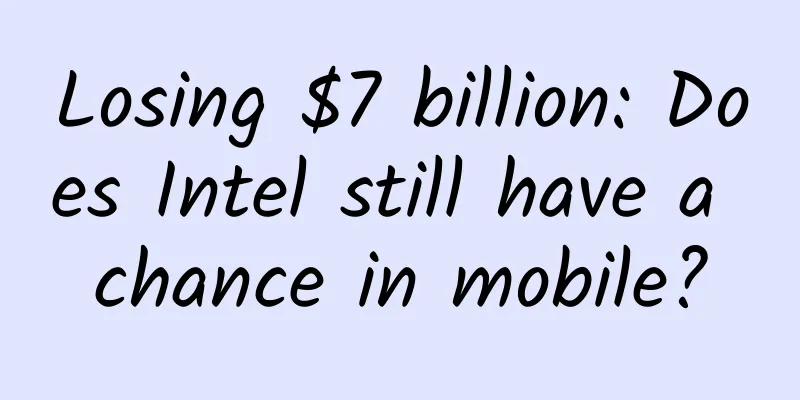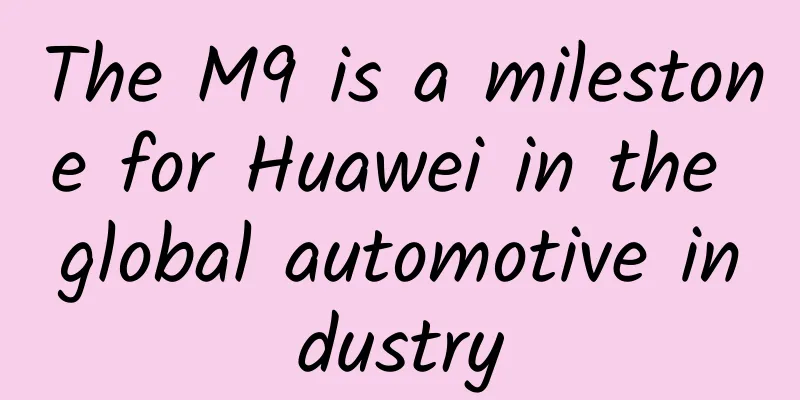Losing $7 billion: Does Intel still have a chance in mobile?

|
As we all know, Intel has invested a lot to gain a foothold in the mobile chip market represented by tablet computers and smartphones. Recently, foreign media reported that in the past two years when Intel was aggressively attacking tablet computer chips, it has accumulated a loss of 7 billion US dollars due to subsidies and marketing to OEM manufacturers. In this regard, some analysts said that Intel may stop such subsidies next year, but the consequence may be the loss of hard-earned market share. At the same time, given the slowdown in the growth of the tablet computer industry itself, Intel has not only lost the opportunity, but even the 7 billion US dollars in losses in the past two years have been wasted (without any meaning). Is the truth really that simple? First, let's analyze why Intel has to take the subsidy method to attract partners to adopt its own chips, even at the cost of huge losses. The industry knows that this year Intel's main chip for the tablet market is its Atom series Bay Trail architecture mobile chip. This can be seen from the fact that almost all the mobile chips released by Intel at IDF this year are Bay Trail architecture. However, from a technical point of view, Bay Trail architecture has the weaknesses of low graphics performance, lack of integration, and high material costs compared with the mobile chips based on ARM architecture at the same time. These have also been confirmed by many related reviews. For Intel, the only weakness that affects the adoption of its chips by OEM partners is cost. Therefore, the huge subsidies are understandable. As for the effect of the subsidies, at least the 40 million tablet chip shipments planned for this year can be completed. As for how much market share it occupies in tablet chips, we conservatively estimate that it is at least around 10%. Although the share is not large, Intel has at least stayed in the tablet market. In this sense, we believe that it is precisely because the tablet market has slowed down this year that Intel's move to exchange losses for market share seems helpless but very meaningful. It has caught the last train of the tablet market, or the mobile market. In addition, the slowdown in the tablet market this year is mainly due to the significant decline in the sales of Apple iPad, which occupies the first place in the tablet market. In addition to the impact of the popularity of large-screen smartphones and the recovery of the traditional PC market, low-priced tablets are also an important factor. According to the latest statistics from IDC, the average selling price of tablets this year has fallen to US$294, a decrease of 13% over the same period last year. In the future, low-priced tablets with a price of US$200-250 will become the main growth driver of the tablet market. In this regard, some industry analysts believe that if tablet computers want to continue to develop and stabilize prices in the future, they should develop into professional tablet computers. Apple has already made a statement on this point, that is, the enterprise market will be the next growth point for its iPad. To this end, in July this year, it reached a cooperation agreement with IBM, and it is said that the 12.9-inch iPad Pro for enterprise-level applications will debut next year. We cannot be sure how much Intel has played a role in the above trend in the tablet market this year, but with billions of dollars of investment, it cannot be said that Intel has made an indelible contribution to lowering the price of the entire tablet market. This is also partially confirmed by the prediction of relevant analysts that if Intel abandons this subsidy strategy, it will increase the difficulty for iPad competitors to launch cheap tablet computers. In addition, we believe that another major effect of Intel's subsidies is that it indirectly helped Apple extend its tablet computer to the enterprise market, which requires large-screen and higher-performance tablet computers. Although Apple's iPad shipments have declined this year, it is still the leader in the tablet computer market and a weather vane for development. If Apple makes efforts in the enterprise tablet market in the future (Apple CEO Cook also admits that the enterprise market will be the next new market for the iPad), it will inevitably lead to manufacturers following suit. As we all know, large screens and higher performance can make Intel's chips play to their strengths and avoid their weaknesses from a chip level. For example, large size is more conducive to chip heat dissipation, and the requirements for chip integration are relaxed, while higher performance is Intel's strength. The application market and trend of this type of tablet computer will undoubtedly allow Intel to narrow the gap with ARN architecture chips to varying degrees. Of course, once tablet computers enter the enterprise market, the attribute of productivity will undoubtedly take the first place, and from this perspective, the ecosystem built by Intel chips seems to be more attractive to tablet computer manufacturers. Finally, another point that cannot be ignored is that it is precisely because of Intel's huge subsidies for tablet chips that the competition in the entire mobile chip market has been indirectly intensified. With the effect of some chip manufacturers withdrawing, Intel took over Rockchip and Spreadtrum, which were also under competitive pressure in the ARM camp, leaving a final outlet for the development of tablet and smartphone chips in the future. Of course, the most important thing is that through subsidies, Intel has won itself the last precious time. What time? This undoubtedly goes back to the most fundamental competition between technology and products. If the aforementioned Intel Bay Trail architecture chip is overall inferior to the ARM architecture chip of the same period, then its next generation, that is, the next generation of mobile chips based on the 14nm Cherry Trail architecture that will be launched next year, will have the strength to truly compete with ARM. In addition, with the improvement of the process (the previous Bay Trail architecture chip used a 22nm process), the cost that the industry is concerned about will also be greatly reduced. By the middle of next year, Broxton, a newer generation of mobile processor chips based on the new Goldmont core and the ninth-generation graphics processor, will also be released. By then, Intel may really have no need to subsidize manufacturers. After all, products are the hard truth to attract manufacturers to cooperate. From the above analysis, we believe that Intel's losses of billions of dollars in the mobile chip market (mainly tablet chips) in the past two years, especially this year, are not only about exchanging profits for market share as the industry says, but more importantly, it is about using profits to make up for the technological gap that it is well aware of, while maintaining its place in the mobile market and leading its competitors to markets that are more conducive to the development of its own technologies and products, thereby winning its last chance to fight ARM in the mobile market next year. As a winner of Toutiao's Qingyun Plan and Baijiahao's Bai+ Plan, the 2019 Baidu Digital Author of the Year, the Baijiahao's Most Popular Author in the Technology Field, the 2019 Sogou Technology and Culture Author, and the 2021 Baijiahao Quarterly Influential Creator, he has won many awards, including the 2013 Sohu Best Industry Media Person, the 2015 China New Media Entrepreneurship Competition Beijing Third Place, the 2015 Guangmang Experience Award, the 2015 China New Media Entrepreneurship Competition Finals Third Place, and the 2018 Baidu Dynamic Annual Powerful Celebrity. |
<<: TVOS of the Broadcasting and Television Industry: The Road to Monopoly Is Not That Easy
Recommend
What are the functions of Foshan flower group buying mini program? How much does it cost to develop a flower shop mini program?
Every time a festival comes, many people will buy...
Can palm lines be used to diagnose high blood pressure? Will frequent use of antihypertensive drugs make blood vessels fragile? Don't believe these rumors
Hypertension is a common chronic disease and is k...
Wake up to a hardened skin from a hot water bottle? Beware of the "low temperature killer"!
Have you ever relied on the warmth of a hot water...
How to make the word count of Apple APP title reach 100+? Use these two tips!
It is often found that the titles of certain weir...
Reflection on the Double Eleven Carnival: Ecological Concepts Still Need to Be Consolidated
The effect of the Double Eleven Carnival, an e-co...
WeChat Enterprise Account Development: Encryption Scheme and Global Return Code Description
This article includes the detailed scheme for enc...
How do I attract targeted customers through Zhihu?
Hello everyone! The following tutorial can help y...
Yu Rongguang resume: What are the functions of sitemaps and robots files?
For a complete website, it will basically be equi...
The Raptor engine has encountered major problems. Is Musk's dream of retiring on Mars still possible?
Three days ago, SpaceX completed its last launch ...
The 10 most popular growth hacking strategies in 2018!
We feel it’s necessary to share with you our rese...
ACEA: European new car registrations in September 2020 reached 1.3 million, up 1.1% year-on-year
Data released by the European Automobile Manufact...
"Mask Companion" is all over the Internet! Cool down in 1 second, refreshing and not stuffy? Doctors urgently remind: It may induce disease
Expert of this article: Wang Qian, attending phys...
15-year-old "weight-loss girl" dies, weighing only 24.8 kg! Family members are heartbroken!
Today, "the girl who lost weight for love pa...
Will L4 be mass-produced first? To B or To C? Andi’s high-profile answer is “To B first”
As the competition for new energy vehicles enters...
Can we keep a dinosaur in the modern world?
With the release of the movie "Jurassic Worl...









